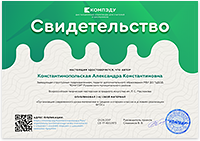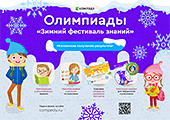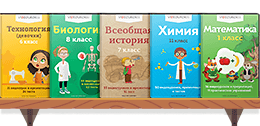Welcome to Belarus 21апреля 2014
Цели:
контроль навыков монологической речи по теме, тренировка навыков восприятия и понимания иноязычной речи на слух;
развитие памяти, мышления, внимания, воображения и наблюдательности; развитие навыков говорения на иностранном языке;
поддержание у школьников интереса к предмету и формирование устойчивой мотивации к дальнейшему изучению иностранного языка; формирование культуры поведения ученика, уважения и любви к своей родине, умения работать в коллективе.
Оборудование: мультимедийный проектор, презентация, приготовленные блюда белорусской национальной кухни, видеоролики с рецептами приготовления блюд белорусской национальной кухни на английском языке, видеофильм про Брестскую крепость на английском языке.
Вед. 1: Good afternoon dear teachers, students and other guests! We are glad to see you here in our assembly hall. We hope that you will get many positive emotions after watching our performance. So, let’s get it started!
Вед. 2: As everybody knows the year of 2014 is announced by our government as a year of hospitality. That’s why we say : “Welcome to Belarus”!
(На сцене остается первый ведущий и выходит приглашенный гость из Африки)
I. The Dialogue
Вед. 1: What’s your name?
- My name is Ayeo.
Вед. 1: I will ask you some questions about BELARUS so that to find out what you know and what we should show you. Do you know where Belarus is?
- I think it’s in Europe.
Вед. 1: Do you know what the capital of Belarus is?
- Minsk
Вед. 1: Do you know any interesting places in Belarus?
- Frankly speaking, no. I’m new here.
- So here we are! We are eager to help you find out everything about Belarus.
( Далее звучит видеоролик с А. Винниковой “I Love Belarus” )
II. Вед. 2: The Republic of Belarus consists of 6 regions: Mogilev, Brest, Vitebsk, Grodno and Gomel. And each region has something to offer to its foreign guests. And we would like to start out journey with our capital city – Minsk.
Trinity Suburb
Trinity Suburb is a beautiful and unique corner of the old Minsk, which is now one of the most favorite places of Minsk dwellers and guests. At the beginning of the XVI century on a hill overlooking Svisloch Trinity church and monastery arose. The city suburb got the name from them. Most homes in the Trinity suburb were made of wood, and for a long time, it was considered a suburb of Minsk, and entered the line of the town only in the XIX century.
In the XVI - XVII centuries this was one of the two pottery centers in Minsk for the production of tiles. In the Trinity suburb Maxim Bogdanovich was born, and Yanka Kupala’s family lived here. A fire of 1809 destroyed all the wooden buildings of Trinity suburb.
Many museums, exhibition halls and cultural institutions are concentrated in the area of ??the suburbs. Museum of the History of Belarusian literature is located on ul. M. Bogdanovicha, 15. It has a permanent exhibition entitled "Poklich" devoed to the Belarusian literature of 1920-30. On the street Starovilenskaga, 14 there is a branch of the State History Museum of Theater and Music Culture of Belarus (salon V. Golubka). Literary Museum of Maxim Bogdanovitsh is also located in the Trinity suburb .Even the interior of bookshops, cafes and some shops of the suburb captures the spirit of bygone centuries.
NESVIZH CASTLE
Nesvizh Palace is considered the country’s most beautiful palace by the people of Belarus. Its r architecture and attractive gardens make it one of the most popular tourist attractions in Belarus.
Nesvizh is in the Minsk region of Belarus, approximately 120km south-west of Minsk. Nesvizh was named Belarus’ 2012 Capital of Culture.
The estate and town was acquired by the Radziwil family in the middle of the 16th century. The foundation stone of Nesvizh Palace was laid in 1584. It was rebuilt many times and has features of many architectural styles including:
Renaissance
Baroque
Rococo
Classicism
Neo-gothic
Modernism
In 1770 Nesvizh Palace was seized by Russian forces. In the late 19th century Nesvizh Palace was restored by the Radziwil family who also designed one of largest landscape gardens in Europe on the estate. After World War 2 Nesvizh Palace was used as a Sanatorium.
In 1994 the estate was designated the national historical and cultural reserve and in 2006 it was added to the UNESCO World Heritage List.
Nesvizh Palace is considered the most beautiful palace in Belarus and attracts thousands of visitors every year. The gardens are a particular attraction, with ornamental lakes, and beautifully landscaped gardens. Nesvizh Palace went through an extensive renovation programme to restore it to its former glory. After intensive restoration works (since 2004), Nesvizh Palace reopened its doors for visitors in June 2012.
Вед. 1: Let’s continue with the Grodno region and its fantabulous Mir Castle )))
Mir Castle in Grodno region is one of the most important tourist attractions in Belarus.
The Mir Castle complex (Mirsky zamok) is located in the town of Mir in the Grodno region of Belarus. The construction of this Belarus’ Gothic style castle was started in the 1520s by Duke Ilinich.In 1568 the castle came into the hands of Mikolay Radziwil, who completed it in Renaissance style.
An Italian garden was laid to the north of the walls and an artificial lake was established to the south. The Radziwills owned the castle for several centuries. During the Napoleonic wars the castle was severely damaged.
In 1891, the castle is bought by Nikolai Svyatopolk-Mirsky His son continued his father’s work..
In 2000 UNESCO designated Mir Castle a World Cultural and Natural Heritage site. The successful blend of Gothic, Baroque and Renaissance architecture makes Mir Castle one of the most impressive castles in Europe. Following intensive restoration works, Mir Castle was reopened to the public in December 2010. Renovation works on the Mir Castle Complex, however, are still underway. The plans are to repair the Italian Renaissance Park, the English Park and the pond, to restore the Svyatopolk-Mirsky Castle. The restoration works on this historic landmark was completed in 2013.
Вед. 2: And now will make a stop in Mogilev, our native town!
Ayeo: Can you please tell me about Mogilev and its attractions. Yesterday while walking I saw a square in the centre of the city. There was a museum there. What is it?
Pupil 1: Oh, it’s our city hall and its museum. The interior is very beautiful because all the weddings take place there. It’s considered to be one of the symbols of our city. Its construction began when Mogilev was granted the Magdeburg Law in 1578. And final renovation was taken place in 2008.
Ayeo: Wow! And there’s also some church on the bank of the river.
Pupil 2: Exactly! It’s Saint Nicholas Convent. It is a complex that includes the city's oldest orthodox church, the St Nicholas Cathedral of the beginning of XVI century. The first church was burned down in XVII but in 1672 it was rebuilt in stone. The church is of Baroque style. Inside it is decorated with wall paintings of all times the oldest of which date back to the end of XVII century, and an iconostasis carved of wood crowned with a sculptural rood, also of XVII century. In 1793 the St Onuphrius' Church was built near the St Nicholas. The convent severely suffered during WWII but was restored after.
Ayeo: And do you have any other symbols of your city?
Pupil 3: Yes! It’s Star Square and Star Gazer Sculpture. Star Square or Ploshchad Zvezd is one of the most interesting sights in Mogilev. The square is actually a sun-dial - 12 chairs situated around the figure of the star gazer serve as the dial, moreover, the chairs match the 12 zodiac signs. The star gazer sculpture is unique not only because of its size (it can be seen from space), but it is also the only one sculpture to a star gazer in the world. Tourist like to sit on the chair of their zodiac sign and take pictures. They also say that if one makes a wish and holds on to a finger of astrologer, the wish will come true for sure.
Ayeo: Thank you for such useful information.
Вед. 2: Let’s go somewhere to the North – Vitebsk Region
Вед. 1: Vitebsk is proud of its very talented artist whose name is Marc Chagall. Chagall is known around the world for his surrealist paintings. Chagall was born in Vitebsk on 7th July 1887 and studied in St Petersburg before leaving for Paris in 1910 where he was instrumental in the development of the Cubist school. He returned to Vitebsk in 1914 and married his fiancée Bella before the outbreak of the World War 1.
Вед. 2: In 1920 he went to Moscow and from there back to Paris. His work was denounced by the Nazis and when war broke out he moved to the US with his wife. When she died in 1944 he stopped painting for some years. Marc Chagall died in France in 1985.
Вед. 1: The Marc Chagall Museum opened in 1992 and is one of the most interesting museums in Belarus with more than 300 original works of art including:
lithographs
xylographs
etchings
aquatints
illustrations to Nikolai Gogol’s poem Dead Souls
The museum also houses a number of reproductions of some of Chagall’s most famous works.
Вед. 2: Shhh, do you hear? The telephone is ringing. (Звучит телефонный звонок)
(На сцену выходит Патрисия Каас и один из учащихся. Оба с телефонами в руках)
Pupil: Hello!
Patricia: Hello!
Pupil: How are you?
Patricia: I’m really fine, thank you. What’s the matter and who are you?
Pupil: I’m one of the organizers of The International Arts Festival Slavonic Bazaar in Vitebsk. Have you heard about it?
Patricia: Have never heard. Tell me about it.
Pupil: Organized by Belarus, Russia and Ukraine, the first festival was held in Vitebsk on 18 July 1992. It was designed to introduce city residents and guests to Slavonic song folklore. Since 1995 the festival has been held under the patronage of Belarus Presiden tAlexander Lukashenko.
Patricia: It seems it’s rather famous!
Pupil: This year the 23th International Festival of Arts Slavonic Bazaar in Vitebsk will be held from 10 to 14 July. That’s why I’m calling you and asking to take part in our festival! What will you say?
Patricia: I think I will say yes!
Pupil: Wow! Thank you! So we will call you later to discuss all the details. Have a good time and take care. Good-bye.
Patricia: Good-bye.
Вед. 1: We still have something to offer and it’s in Brest – one of the most popular tourist destination and it’s Brest Fortress. And here we are glad to suggest a short movie devoted to this wonderful place. Make yourself comfortable and enjoy!
(показ фильма про Брестскую крепость)
Вед. 2: Right now let’s imagine we are in the park. And we are somewhere in Gomel. This park is visited by the tourists all the year round and there are plenty of excursions. Let’s join them!
(на сцене появляется экскурсовод с зонтиком и группа детей)
Guide: The Palace of the Rumyantsevs and the Paskeviches in Gomel is one of the most beautiful examples of architecture in Belarus. Currently the unique museum complex in central Gomel unites the palace of the Rumyantsevs and the Paskeviches, a chapel and a burial vault, a winter garden, a watchtower and a picturesque old park.
The construction of the castle in the style of early Classism began in 1777. The palace was inherited by Piotr Rumyantsev’s elder son, Nikolai Rumyantsev. In 1834 the Gomel residence was purchased by another Field Marshall Ivan Paskevich who had both the palace and the park substantially renovated.
In the 19th and early 20th centuries the palace witnessed lavish receptions, balls and official events. The residence hosted many members of the Romanov imperial family. The last owner of the Gomel estate was Duchess Irina Paskevich. The palace was destroyed and restored several times. It suffered the most severe damage during an uprising in 1919 and the Great Patriotic War.
Throughout its history the palace was used for various purposes. It housed a telephone station, a library, a puppet theater, a youth center and a museum. The collection of the Gomel palace is one of the richest in Belarus. It comprises archeological, ethnographic and numismatic collections, pictures, handwritten books and books printed before the 18th century, icons and religious items, marine organisms and memorial complexes commemorating outstanding persons. In 2012 the Palace of the Rumyantsevs and the Paskeviches in Gomel won the Grand Prix of the first contest called “Museums of Belarus - to the Third Millennium”.
Guide: That’s all I wanted to tell you. Right now you will have 15 minutes to take pictures and I will be waiting for you at the bus.
(группа детей имитирует фотосессию)
III. Вед. 1: Oh, when we were walking round the park, I noticed some people in the café. They were eating something interesting. I wonder what that was?
Вед. 2: Oh, I see you are hungry. Let’s visit our school café, which will treat you with our national dishes.
Сценка в кафе
Waiter: Hello! Glad to meet you. Here’s our menu. We’d like to treat you with belarusian national dishes.
Ayeo: Oh, how interesting.
Waiter: For the first course we offer our traditional belarusian soup okroshka. For the second course we’ll treat you with pancakes and draniki. And our special dessert is baked pumpkin! Enjoy yourselves!
(по мере того, как официант приносит блюда, в зале показывают видеоролики с рецептами приготовления данных блюд)
После этого песня!
Вед.1: And now it’s high time to rest a little bit and get acquainted with some Belarusian traditions!
Pupil: Kupalle is the most loved and celebrated pagan holiday in today’s Belarus. There’s a whole complex of spiritual rituals, beliefs, love and magic. Like in ancient times Kupalle is celebrated in the night from 6 July to 7 July. The central part in Kupalle celebration was a fire, which symbolized life and Yaryla. The oiled wooden wheel would be set on fire to symbolize sun. There were a lot of purification rituals – jumping over the fire, bathing in the river, rolling in the grass dew. There would be a lot of dancing in karagods, competing in strength, fortune-telling and looking for a blossoming fern flower – ‘paparats-kvetka’. Special ritual food is cooked on the fire – fried eggs, kulaha and vareniki.
(После этого звучит песня «Купалинка» и выходят дети, водят хоровод и прыгают через костер)
Вед.2: So this is the end of our performance. We hope that you have learned many things about our country and enjoyed the time spent with us. Thank you for your attention!





